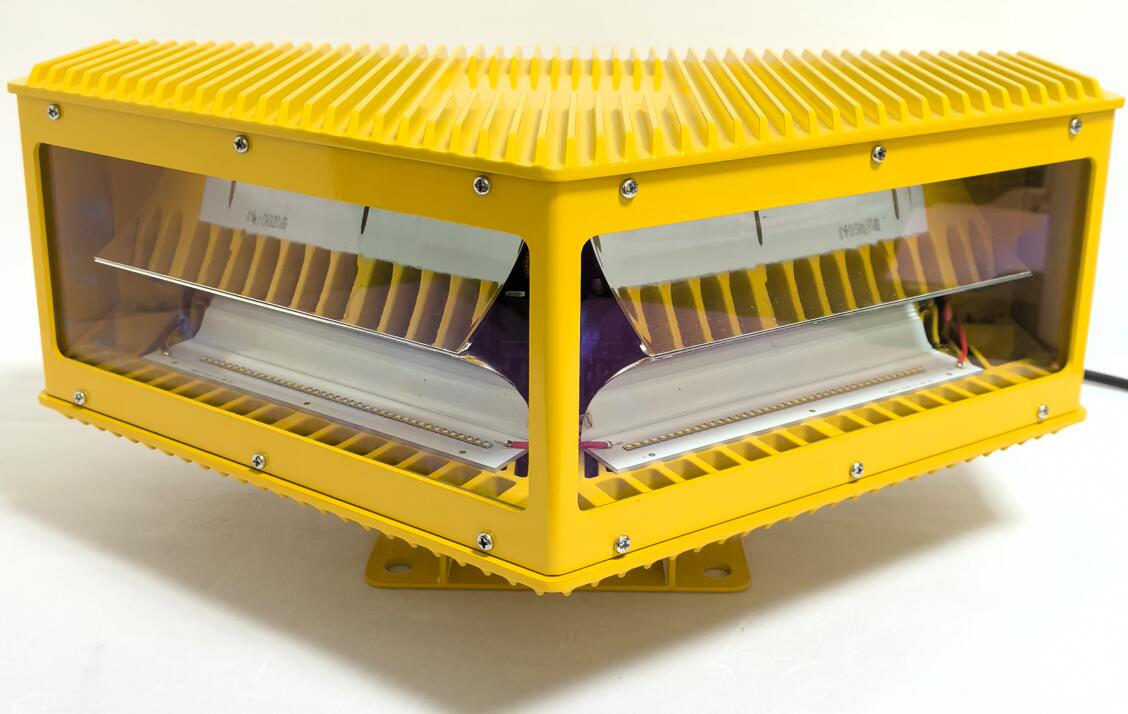Chimney Aviation Warning Lights: Critical Safeguards for Industrial Airspace
Industrial chimneys present unique challenges for aviation safety due to their height, thermal conditions, and frequent proximity to flight paths. Chimney aviation warning lights serve as essential visual markers that ensure these structures remain visible to pilots, preventing potential collisions. This article explores the specialized requirements, regulatory standards, and technological innovations that make these warning systems indispensable for industrial facilities and air traffic safety.
Why Chimneys Require Specialized Warning Systems
Unlike standard structures, industrial chimneys demand specially engineered lighting solutions due to:

Extreme Heat: Exhaust gases require heat-resistant materials
Height Variations: Many exceed 500 feet, requiring high-intensity lighting
Harsh Environments: Exposure to chemicals, vibrations, and weather extremes
| chimney aviation warning lights |
Location: Often situated near airports or in dense industrial zones
Without proper chimney aviation warning lights, these structures could become invisible hazards during night operations or poor weather conditions.
Types of Chimney Aviation Warning Lights
1. Low-Intensity Red Beacons (L-810)
For chimneys under 150 feet (45 meters)
| chimney aviation warning light |
Steady or flashing red LEDs
Used where higher-intensity lighting isn’t mandated
2. Medium-Intensity White Strobes (L-864)
For chimneys between 150–500 feet (45–150 meters)
Bright white flashes (20,000+ candela)
Ideal for mid-height industrial stacks
3. High-Intensity White Strobes (L-865)
For chimneys exceeding 500 feet (150 meters)
Ultra-bright flashes (200,000+ candela)
Essential for super-tall smokestacks
4. Dual Lighting Systems
Combine red and white lights for transitional heights
Red beacons mark lower sections, white strobes highlight upper areas
Regulatory Compliance for Chimney Lighting
Chimney aviation warning lights must adhere to strict standards:
1. FAA & ICAO Requirements
FAA AC 70/7460-1L (U.S. standards)
ICAO Annex 14 (global guidelines)
Mandates for flash rates, intensity, and coverage
2. Industry-Specific Standards
EPA & OSHA compliance for continuous operation
ATEX certification for explosive atmospheres
MIL-STD-810G for vibration and thermal resistance
3. Local Aviation Authority Rules
Height-based lighting mandates
Backup power requirements
Wildlife impact considerations
Non-compliance can result in fines, forced shutdowns, or increased liability risks.
Key Features of Modern Chimney Lighting Systems
1. Heat-Resistant Materials
High-temperature LEDs (withstand up to 200°C / 392°F)
Ceramic-coated housings
Thermal deflection shields
2. Advanced Durability
IP66/IP67 waterproofing
Corrosion-resistant stainless steel mounts
Vibration-dampening technology
3. Smart Monitoring & Control
Remote diagnostics for real-time fault detection
Automated brightness adjustment (for fog, smoke, or dusk/dawn)
Predictive maintenance alerts
4. Eco-Friendly Innovations
Solar-powered options for off-grid chimneys
Dark-sky compliant designs to reduce light pollution
Bird-friendly flash patterns
Installation & Maintenance Best Practices
1. Strategic Placement
Top-mounted for maximum visibility
Multiple tiers for very tall chimneys
Avoidance of obstructions (e.g., ladders, platforms)
2. Specialized Mounting Solutions
High-temperature brackets
Non-intrusive clamps (for active chimneys)
Lightning protection systems
3. Routine Maintenance
Quarterly inspections for soot buildup or damage
Annual photometric testing to ensure compliance
Lens cleaning to maintain optimal brightness
Future Trends in Chimney Warning Lights
AI-Powered Predictive Systems – Machine learning for failure prevention
Hybrid Solar-Grid Power – Enhanced reliability for remote stacks
Radar-Enhanced Visibility – Combining visual and electronic warnings
Wildlife-Safe Lighting – Reducing impact on migratory birds
Chimney aviation warning lights are non-negotiable for industrial facilities with tall stacks, ensuring compliance with aviation safety regulations while protecting pilots and infrastructure. As technology advances, these systems are becoming smarter, more durable, and environmentally friendly.
By adhering to best practices in installation and maintenance, industries can maintain optimal safety while minimizing operational disruptions. The future of chimney aviation warning lights lies in adaptive, sustainable solutions that meet evolving regulatory and environmental demands—keeping both aircraft and industrial operations safe for decades to come.
